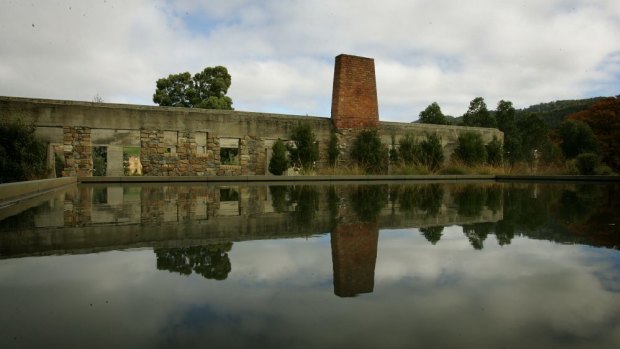This was published 4 years ago
Opinion
Port Arthur massacre a story that must be told, not buried
By Paola Totaro and Robert Wainwright
More than a decade has passed since we spent two years delving backwards over five generations – and across two hemispheres – to attempt to unravel the complete and complex story of Martin Bryant, the blond, blue-eyed angelic boy who slipped into the world in 1967 and, 29 years later, would kill 35 people in cold blood.
Our book, Born or Bred: the making of a mass murderer, was published in 2009 by Fairfax Books after two Australian publishers decided that while the story deserved telling, the subject matter was still too hot to handle. Not much has changed. The news this week that Snowtown director Justin Kurzel is making Bryant the subject of his new movie quickly prompted a Twitter discussion about whether Australia needs this film, which was immediately labelled controversial.

Port Arthur killer Martin Bryant. Credit: Archive
Tasmania, indeed most of the nation, responded to the horror of Port Arthur by burying it and shutting it down. Martin Bryant pleaded guilty and so was never tried. It was unlike Norway, which placed Anders Behring Breivik, killer of 77 young people in 2016, in the dock in a court to be seen and heard by the nation. Bryant was sentenced to many lifetimes in prison and Australia chose never to forgive but did its very best to forget.
We researched the Bryant family’s history on both sides, right back into their English origins. We spoke to his psychiatrists, his lawyer, neighbours, family and friends along with many others who knew him in an effort to piece together the story of the eccentric and disparate characters whose lives briefly intersected with his. And we were supported in our efforts by experts in adolescence, including Patrick McGorry, a professor of youth mental health at the University of Melbourne and an expert known globally for his advocacy of early intervention and youth mental health services.
Martin Bryant’s crime was at the time the world's worst killing spree by a lone, civilian gunman. It horrified and changed Australia – and its gun laws – forever. And yet legal records of the crime were sealed and remain under lock and key after the Tasmanian government passed legislation to block the dissemination of information about Bryant. And year after year, as American schools and colleges were ravaged by guns fired by angry, lonely, disturbed young men, the inevitable media discussion of Australia’s pioneering reform of firearms legislation was rolled out but a detailed discussion of why it had occurred was glossed over.
The mantra we heard at the time was that this was a horror story that had to be buried and forgotten but it never made sense to us: an analysis of history shows terrible events such as war and violence have long been revisited by art in all its forms: painting, literature, cinema. If we bury and simply forget, we cannot learn.

The ruins of the Broad Arrow cafe at Port Arthur have been turned into a memorial garden and pool to remember the 35 people killed there on April 28 1996.Credit: John Woudstra
During our research, we discovered that Bryant had been flagged for health intervention as a very young child after exhibiting dangerous cruelty and tell-tale behaviours for many years but falling through the cracks of adolescent services at exactly the time that his family most needed help.
We believed then – and still argue fervently now – that there are still lessons to be learnt about what happened in the lead up to that sunny Sunday when Bryant loaded the boot of his yellow Volvo with guns and ammunition and returned to the scene of many idyllic childhood summers – Tasmania's historic Port Arthur settlement.
This was a young man who was blessed with striking surfie hair and mesmeric eyes but whose strange and discomfiting mannerisms, speech and demeanour made people uncomfortable and led to an adolescence and youth characterised by great loneliness. And yet we learnt that before he set out on his terrible killing spree, which would not only end the lives of 35 people but injure another 21, he himself had made a tragic, last-minute attempt to turn back. Our book asked then if the Port Arthur massacre could have been prevented and argued why it could happen again.
We hope the film is more than just a re-telling of violence because this is a tragic, human story too. If the film manages to widen understanding of the kind of brain development and psychiatric issues that can lead to such catastrophic disasters – and bring them to new audiences – then we wish the filmmakers all the very best.
Robert Wainwright and Paola Totaro wrote Born or Bred: the making of a mass murderer and are former Sydney Morning Herald journalists.